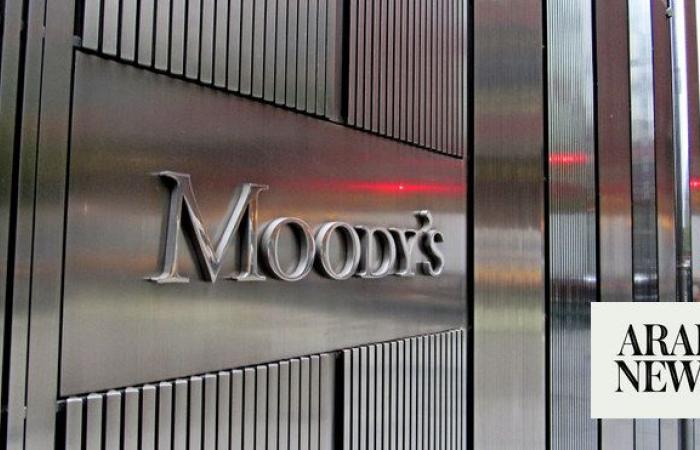Thank you for reading the news about PIF spearheads energy transition with $8.5bn green bond proceeds in 12 months: Moody’s and now with the details
Jeddah - Yasmine El Tohamy - RIYADH: Saudi Arabia’s sovereign wealth fund is spearheading sustainable efforts in the Gulf Cooperation Council region, as it raised a total of $8.5 billion in green bond proceeds in the last 12 months, according to Moody’s Investors Service.
In its latest report, the credit rating agency noted that the green bond issuance from the Public Investment Fund in the last 12 months is more than half the $16.2 billion of green issuance proceeds raised by rated Gulf Cooperation Council companies since 2020.
Moody’s added that the funds raised by the PIF will be allocated to initiatives in areas such as renewable energy, energy efficiency and clean transportation.
GCC-based companies improve reporting on environmental issues
According to the report, GCC-based companies have improved their reporting on environment-related issues, primarily driven by increased requests from stakeholders for such disclosures, evolving climate-related reporting standards and the implementation of sustainability strategies by governments.
“Since 2019, the number of companies publishing sustainability-minded reports has almost doubled. However, the level of disclosure varies significantly from one company to another, illustrating a lack of uniformity in reporting practices in the region, which is also the case in many other parts of the world,’’ said Julien Haddad, vice president and senior analyst at Moody’s.
The report noted that around 50 percent of GCC-based rated issuers disclose scope 1 and 2 greenhouse gas emissions. Out of these, almost half have established scope 1 emission targets, and nearly 40 percent have set scope 2 targets.
Scope 1 emissions are “direct emissions” from sources that are owned or controlled by the company, while scope 2 denotes emissions released into the atmosphere from the use of purchased energy.
Scope 2 emissions are also known as indirect emissions as the actual emissions are generated at another facility such as a power station.
Moody’s further noted that around 40 percent of issuers disclose their carbon emission intensities, which allows comparability of carbon footprints among peers, and more than half of these have set carbon intensity targets.
The report, however, added that only 35 percent of issuers have established net zero targets, and in the vast majority of cases, these targets do not include scope 3, which forms the bulk of the greenhouse gas emissions.
Scope 3 emissions include all indirect emissions that occur across the value chain and are outside of the organization’s direct control, which includes transportation of purchased fuel, commutation of employees working in the company, etc.
Similarly, several utility and oil and gas firms in the GCC have set long-term scope 1 and 2 targets, but they have not set scope 3 emission goals.
“Utilities and integrated oil and gas companies are high contributors to greenhouse gas emissions in the GCC, reflecting the scale of their activities,” said Moody’s in the report.
It added: “National oil companies are also likely to increase production to meet rising demand while investing in renewables to reduce carbon transition risk and support government emission reduction goals.”
On a positive note, Moody’s said that oil and gas companies in the region are looking at a wide range of options to reduce their greenhouse gas emissions, which includes carbon capture storage and the production of hydrogen.
“However, the economic feasibility of these initiatives is unclear given the early-stage nature of these technologies and hurdles in large-scale deployment,” Moody’s added.
Moody’s also lauded Saudi Arabian Oil Co., also known as Saudi Aramco, for its sustainability efforts.
Aramco has set an ambitious target to reach net zero emissions, both scope 1 and 2, across their wholly owned operated assets by 2050, 10 years ahead of Saudi Arabia’s commitment to net zero. The company has also set an interim target to reduce its upstream carbon intensity by 15 percent by 2035.
Similarly, QatarEnergy is also aiming to reduce the carbon intensity of its operations which includes scope 1 and 2 emissions by 35 percent across its liquefied natural gas facilities and by 25 percent across its upstream facilities by 2035.
Saudi Arabia leading sustainable journey in the region
In its report, Moody’s said that Saudi Arabia has established one of the most accelerated timelines in the region to ensure sustainability, as it plans to generate 50 percent of its energy from clean sources by 2030.
Saudi Arabia’s Renewable Energy Project Development Office has outlined plans to build around 59 gigawatts of renewable energy capacity by 2030. Repdo will spearhead the development of 30 percent of the total capacity through competitive bidding, while PIF will oversee the development of the remaining 70 percent.
Talking about the role of Saudi Electricity Co., Moody’s said: “SEC is focused on transitioning toward a clean energy mix including the full displacement of liquid fuel by 2030. As the sole transmitter and distributor of electricity in Saudi Arabia, it has allocated substantial capital investment to upgrade the grid’s infrastructure.”
The report added that SEC has started the rollout of 25 new renewable interconnection projects and is targeting to reach a 100 percent completion rate by 2030.
These were the details of the news PIF spearheads energy transition with $8.5bn green bond proceeds in 12 months: Moody’s for this day. We hope that we have succeeded by giving you the full details and information. To follow all our news, you can subscribe to the alerts system or to one of our different systems to provide you with all that is new.
It is also worth noting that the original news has been published and is available at Arab News and the editorial team at AlKhaleej Today has confirmed it and it has been modified, and it may have been completely transferred or quoted from it and you can read and follow this news from its main source.

